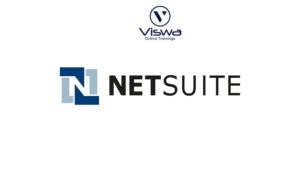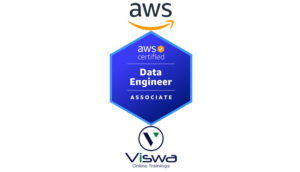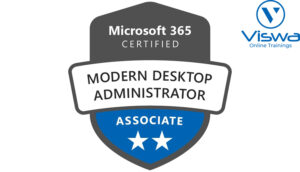SAP BASIS Certification Training
One of the top providers of online IT training worldwide is VISWA Online Trainings. To assist beginners and working professionals in achieving their career objectives and taking advantage of our best services, We provide a wide range of courses and online training.
Learners : 1080
Duration : 30 Days
About Course
An interface between databases, operating systems, communication protocols, and business applications (such as FI, CO, MM, etc.) is provided by SAP Basis, a collection of software and tools. “Systems, Applications & Products in Data Processing Business Application Software Integrated Solution” is the full name of SAP BASIS. SAP Basis is currently referred to as Netweaver. SAP Application Server Technology is the alias for SAP BASIS, and SAP Web Application Server is the alias for NetWeaver.
SAP BASIS Training Course Syllabus
✔ What is Basis? (VISWA Online Trainings)
✔ Introduction to SAP R/3 Client / Server Technology and SAP R/3 Architecture
✔ Roles and Responsibilities of Basis Consultants
✔ Database Service. Application Services, Presentation Services
✔ Introduction to OS Concepts
✔ Introduction to SAP R/3 Hardware Concepts: The CPU
✔ Introduction to SAP R/3 Hardware Concepts: Storage
✔ Available SAP R/3 Platforms – Windows NT
✔ SAP R/3 Networking issues
✔ SAP R/3 Application Server Architecture DVEBMGS00
✔ Dialog Server
✔ Update Server
✔ SAP R/3 Work Process – Overview
✔ Managing SAP R/3 Work Processes
✔ Fill the requirement by customer
✔ Initialization of RAM CPU
✔ Storage selection
✔ Selection of Hardware
✔ Take approval from SAP
✔ Requirement gathering
✔ Blueprint Phase
✔ Realization phase
✔ Pre-Golive Test phase
✔ Golive Phase
✔ Introduction to Client
✔ Creating Client
✔ Client Copy ( Local, Remote, Export, and Import )
✔ Dropping a Client
✔ Different Types of users dia,system,cumm,service,reference
✔ Creating User
✔ Locking and Unlocking a User
✔ Limiting Logon Attempts
✔ Setting Password Controls
✔ Maintaining User defaults & Options
✔ Jobs Definition
✔ Start Date
✔ Job Steps
✔ Job Monitoring
✔ Deleting a Job
✔ Default profile
✔ Startup profile
✔ Instance profile
✔ OS Monitoring
✔ DB Monitoring
✔ Alerts
✔ Introduction to SAP R/3 Virtual Memory
✔ SAP R/3 Buffers
✔ SAP R/3 Memory Management System
✔ Remote Function Call ( RFC )
✔ Dump Analysis
✔ Sys Log
✔ Development (DEV). Testing (QTST). Production ( PROD )
✔ Single System Landscape
✔ Two System Landscape
✔ There System Landscape
✔ Customizing
✔ ABAP/4 Workbench
✔ Change Request
✔ Recording Changes
✔ Transportation
✔ TMS Domain
✔ TMS Domain Controller
✔ Transport Groups
✔ Transport Layer
✔ Transport Route
✔ Transport Directory
✔ Virtual Systems
✔ Define Modes (DAY Night)
✔ Define Empty container
✔ Define Instance
✔ Activate Instance
✔ Overview of Support Packages
✔ Introduction to Applying SAP Patches
✔ Introduction to Applying Kernel Patches
✔ Download Kernal from SMP
✔ Taking backups of existing kernals
✔ Implement new kernal
✔ Check consistency after Kernal Upgrade
✔ Oracle Server Architecture Overview
✔ Oracle Server Startup/Shutdown
✔ Table space Administration
✔ SAP R/3 Reorganization of an Oracle Database
✔ SAP R/3 Restore and Recovery of an Oracle Database
✔ Startup and Shutdown of database
✔ SQL Commands
✔ Oracle Administration for SAP
✔ Installing SAP R/3 on Windows Server 2003 – Preparation
✔ Installing SAP R/3 on Windows Server 2003 – Installation
✔ Installing SAP R/3 on Windows Server 2003 – Post Installation
✔ Language Transport
✔ Installing Database Server and Application Server
✔ Installing Presentation Server ( SAP GUI ) & Accessing SAP R/3 from PC
✔ Starting and Stopping R/3 System
✔ Oracle Architecture
✔ Connectivity Mechanism of work process to Database
✔ Starting & Stopping Database
✔ Working on Database Parameters
✔ Configure Listener services
✔ Table space Administration (Table spaces,
✔ Data files extending and segments)
✔ BR Tools administration
✔ Configuring the database backup
✔ EHP upgrades concepts
✔ Extensive use of SUM & SWPM Tool
✔ System Copies Concepts
✔ Kernal Upgrade to new level
✔ SAP Spool System Architecture
✔ Introduction to SAP Access Methods
✔ Defining R/3 Printer Devices
✔ Managing spool Requests
✔ TEMSE object Database
| Live Instructor Based Training With Software |
| Lifetime access and 24×7 support |
| Certification Oriented content |
| Hands-On complete Real-time training |
| Get a certificate on course completion |
| Flexible Schedules |
| Live Recorded Videos Access |
| Study Material Provided |
SAP BASIS Training - Upcoming Batches
7th NOV 2022
8 AM IST
Coming Soon
AM IST
5th NOV 2022
8 AM IST
Coming Soon
AM IST
Don't find suitable time ?
CHOOSE YOUR OWN COMFORTABLE LEARNING EXPERIENCE
Live Virtual Training
-
Schedule your sessions at your comfortable timings.
-
Instructor-led training, Real-time projects
-
Certification Guidance.
Self-Paced Learning
-
Complete set of live-online training sessions recorded videos.
-
Learn technology at your own pace.
-
Get access for lifetime.
Corporate Training
-
Learn As A Full Day Schedule With Discussions, Exercises,
-
Practical Use Cases
-
Design Your Own Syllabus Based
SAP BASIS Training FAQ'S
Running SAP applications requires an operating system or platform called SAP foundation. It is compatible with all SAP applications.
By learning through VISWA Online Trainings, advance in your job.
- System Trace: A system trace is utilized when you want to log internal SAP system operations. The trace is helpful for identifying internal issues with the host system and SAP system.
- System Log: The System log is used to find the most recent application server and CI logs.
- Developer Trace: If there are issues, Developer Trace keeps a technical log of the error or issue.
The heap data is solely allocated by the user in private mode; it is no longer shared or accessible by the entire system. When your extended memory is used out, this happens.
OCM stands for online rectification system, and OCM Patches can be applied utilising SPAM.
There are three steps to exporting or importing tables in SAP from the OS level, and you can do this by utilizing the R3trans program in SAP.
Step 1: Compile a list of all the tables that need to be exported.
Step 2: Verify that the directory that you plan to export has enough disc space.
The next step is to create the two control files that R3trans will utilize for import and export.
- When the R/3 system is deployed, the value 000 becomes available. Another name for this is the master client.
- 001 – 001 is basically an exact replica of 000. There is a trial copy included. This is done in order to attract new clients.
- 066 – SAP Early Watch is the client’s assigned number. If diagnosis and monitoring services are required, the SAP system uses this.
Reviews
 Lavanya Posina2024-09-30To get the SAP S4HANA MM training is really worth from VISWA Technologies. I would like to thank you for providing an excellent training.
Lavanya Posina2024-09-30To get the SAP S4HANA MM training is really worth from VISWA Technologies. I would like to thank you for providing an excellent training. Krishna Grandhi2024-09-19I attended PBCS course. Trainer has good knowledge and his explanation is easy to understand. The support team is also supportive during the training period. Overall experience is good.
Krishna Grandhi2024-09-19I attended PBCS course. Trainer has good knowledge and his explanation is easy to understand. The support team is also supportive during the training period. Overall experience is good. Siddhartha Mothukuri2024-09-10Learnt SAP EWM and it has been a really good experience with VISWA Online Trainings and trainer has been excellent in terms of his understanding in business as well as SAP. Thank you
Siddhartha Mothukuri2024-09-10Learnt SAP EWM and it has been a really good experience with VISWA Online Trainings and trainer has been excellent in terms of his understanding in business as well as SAP. Thank you Lakshmiprasanna Annem2024-08-01Thanks chaitanya arrange for sap bw on Hana job support. I will recommend definitely anyone.
Lakshmiprasanna Annem2024-08-01Thanks chaitanya arrange for sap bw on Hana job support. I will recommend definitely anyone. VINOD reddy2024-07-23Amazing Oracle Transportation Management (OTM) training! Definitely recommend.
VINOD reddy2024-07-23Amazing Oracle Transportation Management (OTM) training! Definitely recommend. Arvind P2024-06-28Good institute. Very responsible. As a trainer I got a good experience with them
Arvind P2024-06-28Good institute. Very responsible. As a trainer I got a good experience with them srinivasulu p2024-05-14I have recently enrolled azure cloud security training. There was lots of interaction sessions. It was best online learning platform.
srinivasulu p2024-05-14I have recently enrolled azure cloud security training. There was lots of interaction sessions. It was best online learning platform. Mahendra Reddy2024-05-14I would definitely recommend it anyone looking for generative AI course. This is friendly course thanks phani kumar
Mahendra Reddy2024-05-14I would definitely recommend it anyone looking for generative AI course. This is friendly course thanks phani kumar




